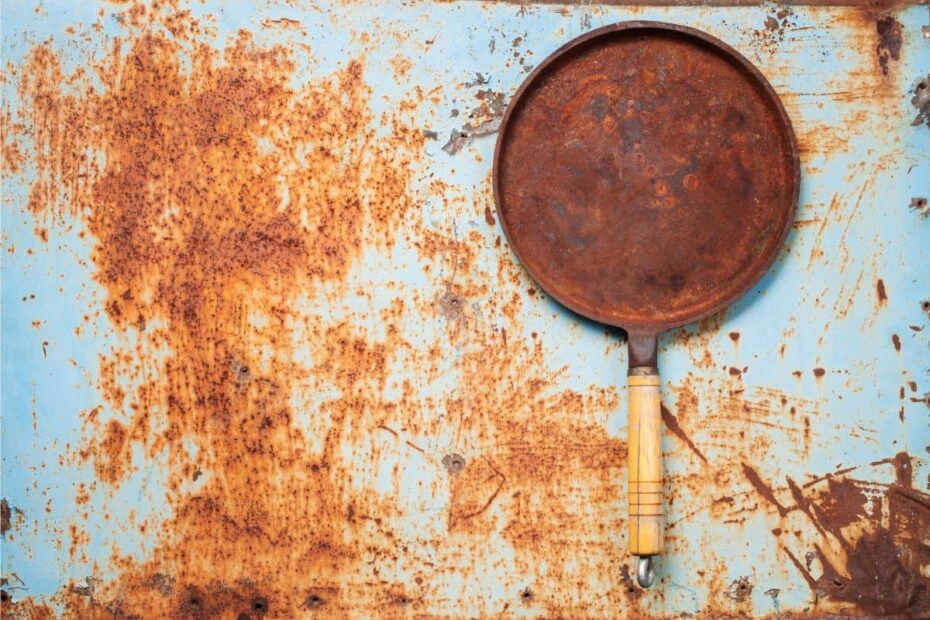Prologue: A Whisper from the Past
Imagine holding a rusty cast iron skillet that once graced your grandmother‘s kitchen, its surface telling stories of countless family meals and generations of love. This isn‘t just metal—it‘s a living piece of history waiting to be restored.
The Heartbeat of Cast Iron: More Than Just Metal
Cast iron isn‘t merely a material; it‘s a testament to human ingenuity and craftsmanship. Each piece carries a narrative, whispering tales of industrial revolution, culinary traditions, and familial connections. When you restore a rusty cast iron piece, you‘re not just cleaning metal—you‘re breathing life into a historical artifact.
The Scientific Symphony of Rust: Understanding Your Adversary
Rust isn‘t a simple process—it‘s a complex electrochemical dance between iron, oxygen, and moisture. At the molecular level, iron atoms eagerly surrender electrons to oxygen, creating iron oxide. This transformation isn‘t just corrosion; it‘s a fundamental chemical conversation happening right before your eyes.
The Metallurgical Ballet of Oxidation
When moisture touches iron, an intricate ballet begins. Water molecules split, releasing hydrogen and oxygen. Iron atoms lose electrons, forming positively charged ions that combine with oxygen to create rust. This isn‘t destruction—it‘s a natural metamorphosis that challenges collectors and restorers.
Rust Assessment: Reading the Story of Corrosion
Every rust pattern tells a unique story. Some whisper of gentle neglect, while others scream of harsh environmental challenges. As a collector, your first task is to become a detective, reading the subtle language of corrosion.
Decoding Rust Severity
Superficial rust appears as a light, powdery layer—often easily removable and indicating minimal damage. Deep rust, however, creates pitting and structural compromise, requiring more invasive restoration techniques.
Restoration Techniques: A Collector‘s Toolkit
Natural Restoration Methods
The Vinegar Transformation
White vinegar isn‘t just a kitchen staple—it‘s a powerful rust-removal agent. When you submerge a rusty cast iron piece in vinegar, acetic acid begins breaking down iron oxide molecules. This method works best for lighter rust formations.
Potato and Salt: An Unexpected Ally
The oxalic acid in potatoes combined with abrasive salt creates a natural rust-removal paste. This method might sound folkloric, but it‘s grounded in solid chemical principles.
Advanced Restoration Techniques
Electrolysis: The Modern Miracle
Electrolysis represents the pinnacle of rust removal. By creating an electrical circuit, you can literally pull rust molecules away from the metal surface. This technique requires precision but offers remarkable results.
Professional Restoration Considerations
Some pieces demand professional intervention. Museum conservators and specialized restoration experts possess techniques that go beyond home methods.
Sandblasting and Professional Treatments
While effective, professional treatments like sandblasting must be approached carefully. Inappropriate techniques can damage delicate historical pieces.
Preservation: The Art of Protection
Restoration isn‘t a one-time event—it‘s an ongoing commitment. Proper storage, regular maintenance, and protective coatings are crucial.
Climate Control and Storage
Humidity is cast iron‘s greatest enemy. Invest in dehumidifiers, use silica gel packets, and create controlled storage environments.
Economic and Cultural Significance
A properly restored cast iron piece isn‘t just a kitchen tool—it‘s an investment. Rare pieces can appreciate significantly in value, sometimes increasing worth by hundreds of percentage points.
Collector‘s Market Insights
Understanding market trends, recognizing rare manufacturing periods, and documenting restoration processes can transform a simple skillet into a valuable collectible.
Emotional Restoration: Beyond Technical Processes
Restoring cast iron transcends technical skill—it‘s about connecting with history. Each piece you restore carries memories, represents craftsmanship, and preserves cultural heritage.
Personal Reflection and Passion
As a collector, your work is more than maintenance. You‘re a guardian of stories, a keeper of traditions that might otherwise fade away.
Emerging Technologies in Restoration
Laser treatments, nano-technological approaches, and advanced chemical processes are revolutionizing restoration techniques.
The Future of Preservation
Technological advancements promise more precise, less invasive restoration methods, offering exciting possibilities for collectors.
Conclusion: Your Legacy of Preservation
Restoring cast iron is an art form, a scientific process, and a deeply personal journey. You‘re not just cleaning metal—you‘re preserving history, one piece at a time.
Remember, every rusty skillet is a canvas, every restoration a masterpiece waiting to be revealed.
Final Words of Wisdom
Approach each piece with respect, patience, and passion. Your dedication transforms seemingly worthless metal into treasured artifacts that connect generations.
Dedicated to all passionate collectors who see beauty in restoration
